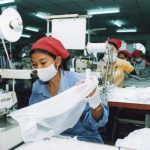So long to the Asian sweatshop

For 30 years, the word “sweatshop” has conjured up a very specific image: low-wage Asian workers making branded clothes in crowded, unsafe factories for consumers overseas. The power of that image has launched human rights campaigns, altered how major companies source their products and informed (often incorrectly) how politicians in rich countries shape their trade policies. Now that image is fading into history. In Asia, at least, the factors that made sweatshops an indelible part of industrialization are starting to give way to technology. A recent report from the International Labor Organization found that more than two-thirds of Southeast Asia’s 9.2 million textile and footwear jobs are threatened by automation — including 88 percent of those in Cambodia, 86 percent in Vietnam and 64 percent in Indonesia. Whether that will be good for workers in general is debatable. But one thing is certain: The heyday of the Asian sweatshop is coming to an end.

